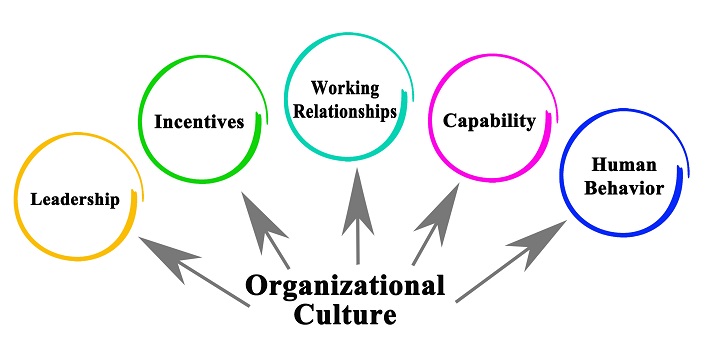
- HRM – Home
- HRM – Introduction
- HRM – HR & Business Strategy
- HRM – Planning
- HRM – Talent Management
- HRM – Training & Development
- HRM – Performance Management
- HRM – Employee Engagement
- HRM – Employee Performance
- HRM – Compensation Management
- HRM – Rewards & Recognition
- HRM – Organizational Culture
- HRM – Workplace Diversity
- HRM – Industrial Relations
- HRM – Dispute Resolution
- HRM – Ethical Issues
- HRM – Audit & Evaluation
- HRM – International HRM
- HRM – eHRM
- HRM – Small Scale Units
HRM - Organizational Culture
Human resources do have a challenging role to play in organizational culture, as it is the employees who work for the organization, who embrace and improve a particular culture within the organization. Any desired change to the culture of the organization has to be done through the employees and by the employees.
Organizational Culture and HR Practices
Basic HRM exercises like recruitment, selection, and training affect the performance and stability of an organization. These exercises have the ability to influence employee behavior and build values that develop the organizational culture.

Change in behavior defines how one acts or conducts oneself in any situation. Therefore, if HR exercises could positively affect the behavior, improving positive thinking about organizational initiatives towards the employees, it would lead to positive results for the business. Cultural values are part of the external factors that influence HR exercises. Cultural values command employee behavior.
In organizational cultures where employee engagement is common, it is more likely to have higher employee satisfaction and encouragement than the ones that do not favor employee involvement.
Anyhow, there might be various reasons why employees do not want to or speak out. Some employees might see this as an unnecessary risk, while others might simply have personal reasons like being shy or not being comfortable with the management.
Management Styles
An organization experiences different management styles that may change or remain steady with time.
There are different management styles that we come across while observing the management patterns of different private and public sector companies.
Let us take a look at the following management styles −
Collegial Style
In the collegial style, resources and rewards are uniformly distributed. The management control over the employees is restricted, resulting into employee empowerment. Individual duty is the basis of organizational performance.
Organizational success depends on the commitment that an employee has towards the work and the business. This key element and distributed values help create a unity of direction and focus on the part of the employees.
Meritocratic Style
In the meritocratic style, employees are bothered about productivity and cohesion. The management puts stress on performance. In short, this management style believes in the fact that power should be distributed on the merit basis.
Appointments are made and duties are assigned to individuals on the basis of their "merits", namely intelligence, credentials, and education, which are determined through evaluations or examinations, for example, Civil Service Exams.
Elite Style
In the elite management style, the organizational hierarchy is highly improvised. Power, resources, and rewards are focused at the top levels of the hierarchy. Employees have no say in the decisions made by the senior management.
Leadership Style
The leadership style of management has a lot in common with the elite style of management, but rather than a faction of leaders at the top level, it has leaders at different levels of the hierarchy. For example: the army.
In the next chapter, we will throw some light on how to manage diversity in workplace efficiently.